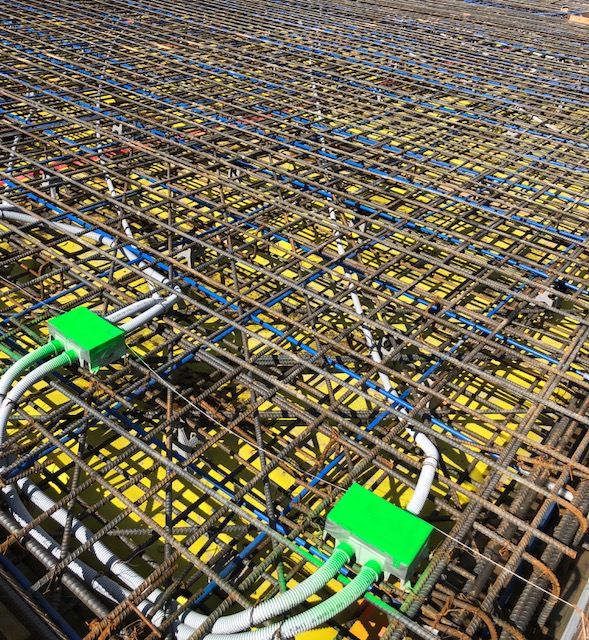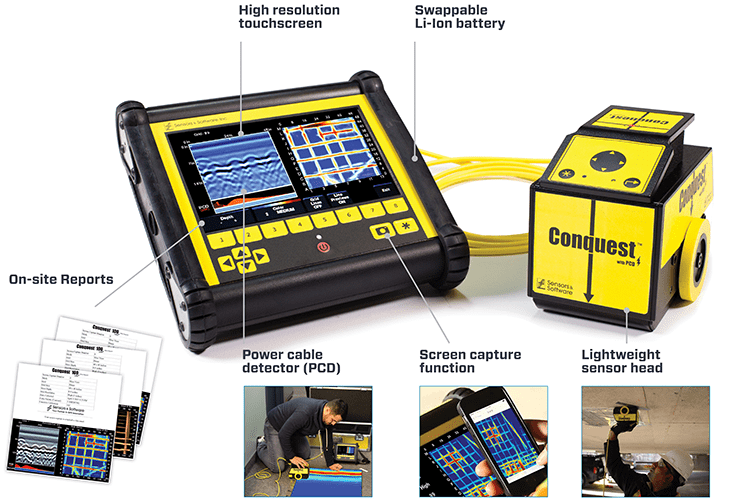Explore RainierGPR Service Areas for Specialist Concrete Scanning
Explore RainierGPR Service Areas for Specialist Concrete Scanning
Blog Article
Concrete Scanning: A Critical Step In The Direction Of Guaranteeing Structural Integrity and Security
In the world of construction and framework upkeep, the significance of concrete scanning can not be overstated. This precise process holds the essential to unveiling possible dangers concealed underneath the surface area of seemingly solid frameworks. By employing sophisticated modern technology and techniques, concrete scanning works as a pivotal device in ensuring that the integrity and safety and security of structures and bridges are promoted to the highest possible requirements. However, beyond its surface-level ramifications, the duty of concrete scanning expands far deeper than fulfills the eye.
Relevance of Concrete Scanning
Concrete scanning plays a vital function in ensuring the structural honesty and safety of structures and facilities tasks. By using advanced modern technologies such as ground-penetrating radar (GPR) and electromagnetic induction, professionals can non-destructively examine concrete frameworks to detect prospective flaws, spaces, ingrained items, and support design. This process enables early discovery of anomalies that can jeopardize the stability of a framework, avoiding costly damages and guaranteeing the safety of owners.
Concrete scanning is specifically crucial during the preparation and construction phases of a project. Before boring, cutting, or coring right into concrete, scanning aids identify the exact areas of rebar, post-tension wires, and various other embedded aspects, lowering the risk of unintended hits that might result in structural weaknesses. In addition, concrete scanning help in quality control by verifying the thickness of concrete covers and detecting any kind of inconsistencies that might influence the overall toughness of the framework. Ultimately, investing in concrete scanning services is not just a proactive step to alleviate dangers however additionally a fundamental step in the direction of keeping the long-term safety and security of buildings and facilities.
Innovation for Concrete Evaluation

Advantages of Early Discovery
Prompt discovery of architectural problems can considerably minimize risks and guarantee the longevity of construction tasks. By determining prospective issues early on in the construction process, stakeholders can take aggressive steps to attend to issues before they intensify into larger and more pricey troubles. Among the key benefits of early detection is the prevention of architectural failings, which can posture serious security dangers and bring about task pop over to this web-site hold-ups and monetary losses.
Moreover, very early discovery permits for prompt repair work and upkeep, which can help expand the lifespan of the structure. By dealing with problems immediately, building teams can avoid costly repair work and even the need for premature substitute of structural elements. This positive method not only conserves time and cash yet also enhances the total security and longevity of the construction task.
In addition, early detection can boost task planning and decision-making by giving stakeholders with useful insights into the problem of the structure. Armed with this info, project supervisors can make educated options pertaining to construction techniques, timelines, and materials, resulting in extra successful and reliable job outcomes.
Making Certain Architectural Stability
Ensuring the architectural security of a construction job is paramount to its safety and long life. Concrete scanning plays a crucial role in ensuring structural security by identifying possible problems such as voids, delamination, or reinforcement deterioration that could compromise the stability of the framework over time.
By making use of advanced scanning technologies like ground-penetrating radar (GPR) and electro-magnetic induction, building and construction specialists can non-invasively check concrete structures to recognize areas of issue beneath the surface area. This positive method permits the very early discovery of flaws or weak points, enabling timely repair services or reinforcement to stop architectural failures.
Regular concrete scanning throughout various building stages and throughout the life cycle of a framework can aid preserve its stability, mitigate risks, and make certain the safety of owners. By prioritizing architectural stability via concrete scanning, building and construction tasks can improve their durability and resilience, eventually adding to greater safety and long life.

Avoiding Essential Failings
To protect against devastating events, meticulous surveillance and positive maintenance are essential in avoiding important failures within architectural structures. Spotting prospective problems prior to they intensify additional reading is vital to avoid architectural failures. Carrying out regular examinations, such as concrete scanning, can reveal surprise defects like voids, cracks, or deterioration that might endanger the stability of a framework. By using innovative scanning innovations like Ground Passing through Radar (GPR) or Concrete X-ray, engineers can non-destructively examine the problem of concrete and identify powerlessness that call for support or repair - RainierGPR Service Areas.

Final Thought
Finally, concrete scanning plays an important duty in guaranteeing structural stability and security by using advanced modern technology for early detection of possible issues. This proactive strategy assists stop critical failings and makes sure the stability of frameworks. It is vital to prioritize concrete inspection as a conventional method to protect the durability and security of structures and framework.
Concrete scanning plays a crucial duty in ensuring the structural integrity and security of structures and facilities jobs. In addition, concrete scanning aids in high quality control by confirming the thickness of concrete covers and identifying any inconsistencies that may affect the general durability of the framework. Concrete scanning plays an advice essential function in guaranteeing architectural stability by discovering possible issues such as voids, delamination, or support deterioration that might endanger the integrity of the structure over time.

In conclusion, concrete scanning plays an essential role in making sure structural stability and security by using sophisticated technology for early detection of potential issues.
Report this page